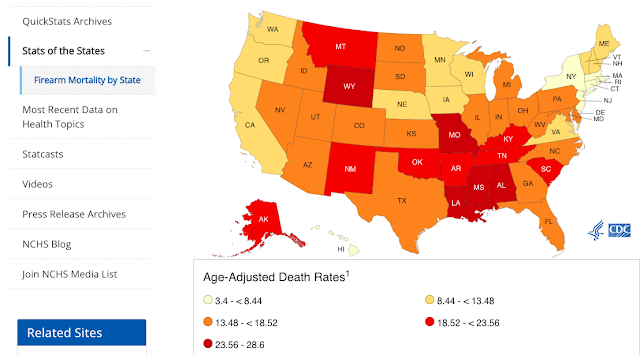Examining Statistics in Sociology (and generally) requires critical thinking. By critical, I mean being detailed and inquisitive about the stats. For example, let's examine the following claim that we hear often (and many of us or our parents may even have said).
Claim: There is a lot of violence in Illinois especially, Chicago.
How can we be critical of this claim; what questions would you ask before accepting this claim as fact? What details would you want to know?
Research this claim critically. In small groups try to examine this claim critically and then explain your finds to the class. What nuances should we know before making this claim?
Statistics are rhetorical - they must be defined and explained by words.
Here are some sites to help you:
Supreme Court narrows definition of violent crime
What is "violent" crime? Does armed robbery count?
FBI Uniform Report
The FBI categorizes violent crime as, "violent crime is composed of four offenses: murder and nonnegligent manslaughter, rape, robbery, and aggravated assault. Violent crimes are defined in the UCR Program as those offenses that involve force or threat of force."
Reported violent crime per capita by state from Statista
Violent crime is generally contrasted with property crime, with the latter defined as the taking of money or property without force (or the threat of force) against the victims. Note that in these definitions, robbery counts as violent crime whereas burglary does not. Comparing the the number of committed crimes in U.S. by category, property crime far outnumbers violent crime, while aggravated assault accounts for some two-thirds of all violent crime.
Crime per capita by state from World Population Review
Crime overall is relatively low in Illinois and the homicide rate is middle of the pack.
Gun deaths by state from World Population Review
Firearm deaths by state from CDC
Crime in Chicago; What Does the Research Tell Us? from Northwestern U.
The violence was also extremely concentrated. Skogan said 50 percent of all the shootings in 2016 occurred in just a handful of neighborhoods, including Austin, Garfield Park, North and South Lawndale, Englewood, and West Pullman. The crime is even more concentrated in those communities, often occurring within just a few blocks. There is one four-by-four block area in Humboldt Park, Skogan said, that has been in the top 5 percent of shootings in the city every year for 27 years.
Note that the crime rate has not spike generally for all Chicagoans. As the graph above and the text above that explains, the crime is particularly high in smaller communities within Chicago.
From PBS, What U of Chicago Crime Lab Data says about Chicago crime
The Chicago Police Department reports 661 murders occurred as of Dec. 10, 2022, down 15% from 2021 when the tally was 776. Overall shootings are also reported as down by about 20% from 2021 numbers, from 3,399 to 2,718. But reported incidents of motor vehicle theft have nearly doubled from 2021, from 9,933 to 19,238. Theft numbers also showed a steep increase.
From Crain's Chicago Business; All Big Cities Have a Violence Problem. Chicago's is Different.
https://www.chicagobusiness.com/crains-forum-safer-chicago/chicago-violence-problem-debate-safety-inequalityHow safe is Chicago? The answer depends on where you're standing.
The North Side is as safe as it's been in a generation, with a homicide rate that has declined steadily throughout this century, barely ticking up during the especially violent years of 2016 and 2020, then falling again in 2021, even as the city as a whole experienced its bloodiest year since the mid-1990s, according to Chicago Police Department data.
The homicide rate for the city’s four North Side police districts (the 18th, 19th, 20th and 24th) last year was 3.2 residents per 100,000, according to analysis of data from the University of Chicago Crime Lab—lower than Evanston’s, Champaign’s and Springfield’s, based on data from the Federal Bureau of Investigation. Overall, Chicago’s per-capita murder rate is higher than in New York City or Los Angeles, but is lower than in Midwestern cities such as Detroit, Milwaukee and St. Louis.
The homicide rate for the city’s four North Side police districts (the 18th, 19th, 20th and 24th) last year was 3.2 residents per 100,000, according to analysis of data from the University of Chicago Crime Lab—lower than Evanston’s, Champaign’s and Springfield’s, based on data from the Federal Bureau of Investigation. Overall, Chicago’s per-capita murder rate is higher than in New York City or Los Angeles, but is lower than in Midwestern cities such as Detroit, Milwaukee and St. Louis.







No comments:
Post a Comment